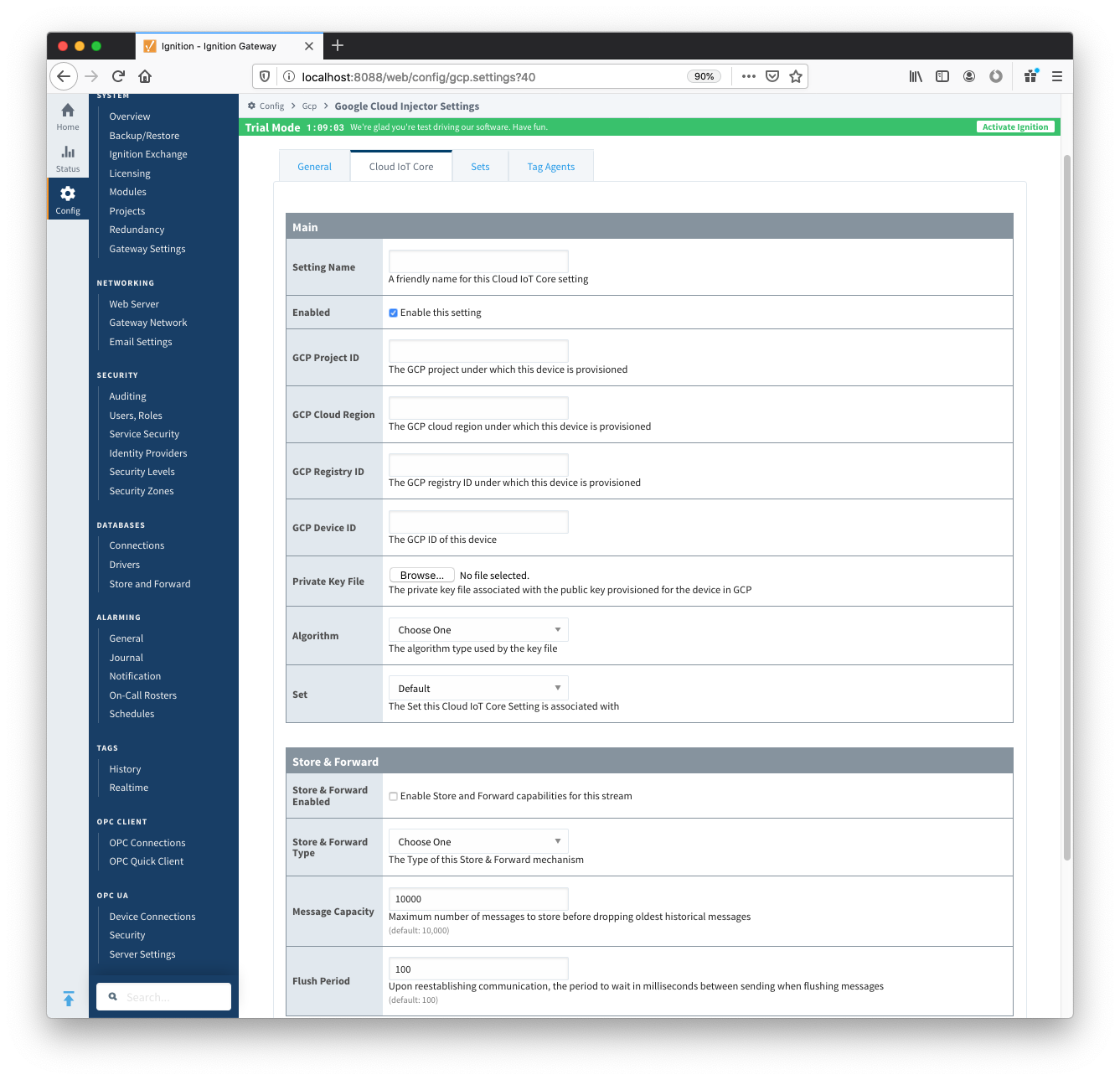...
- Store & Forward Enabled
- Whether to enable Store & Forward capbilities capabilities for this endpoint
- Store & Forward Type
- The type of the Store & Forward mechanism
- Message Capacity
- The Maximum number of messages to store before dropping the oldest historical messages
- Flush Period
- The period of time to wait (in milliseconds) between sending when flushing messages
Advanced
- Port
- TCP Port number to use. Default is 8883
- Proxy Type
- The proxy type if a proxy server is being used. Default is NONE
- Options are NONE, HTTP, HTTPS
- Proxy Hostname
- The Proxy Hostname if a proxy server is being used
- Proxy Port
- The Proxy port number if a proxy server is being used
- Keep Alive
- The MQTT Keep Alive timeout for the MQTT Connection
- Max Message Size
- The maximum message size allowed for an MQTT message before the message will be broken up into smaller messages
- Max Throughput
- Maximum throughput per second in bytes. The modules will throttle messages to prevent exceeding this max limit. Default is 524,288
- Session Expiration
- The number of minutes before the session token expires. Default is 1440
Clicking on the "Create new Cloud IoT Core Setting..." link will bring up the following form for adding a new Cloud IoT Core endpoint.

 Image AddedSets
Image AddedSets
The Sets tab contains a list of Google Cloud Sets. Each set represents a grouping of Cloud IoT Core endpoints. When a set is referenced by a Tag Agent the Agent will push Tag data to all Cloud IoT Core endpoints contained within that Set. The Sets are disjoint, meaning that a single Cloud IoT Core endpoint cannot be in more than one set. Out of the box the Google Cloud Injector module will have one "Default" set defined.
...
![]()
![]()
![]()
![]()
![]()
![]()
![]()
![]()
![]()